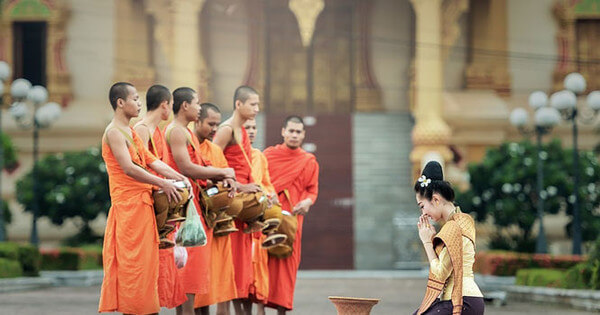Exploring the Unique Cultural Aspects of Thailand
Thailand – the Land of Golden Temples, is a country that has seen significant development alongside its distinctive cultural heritage. When visiting Thailand, tourists will have the opportunity to learn and explore the unique cultural aspects of the country.
Thailand has a relatively large area of about 517,000 square kilometers but a population of just over 62 million people. Presently, the ‘Land of the Golden Temples’ has become an appealing tourist destination for both domestic and international travelers. When touring Thailand, you will experience the unique characteristics of Thai customs and traditions.
1. Greetings – Unique Thai Culture
Thailand is a beautiful country rich in cultural heritage with numerous ancient and intriguing traditions, and a society that places great importance on Buddhism. Greetings, expressions of gratitude, or farewells in Thailand are unique aspects of Thai culture. These gestures involve pressing palms together, akin to praying, bringing them towards the chest or forehead, and bowing the head as a sign of respect.
2. Reverence for the Monarchy
The monarchy is fundamental in Thai culture, and members of the royal family are highly esteemed by the Thai people. It is a major faux pas to make negative comments about the King or any royal figure, even in jest. Another custom in Thailand is standing up when the national anthem is played at sports events, movies, or public gatherings.
3. National Anthem – Traditional Cultural Trait
Given Thailand’s reverence for Buddhism and the monarchy, anything related to the nation is treated with respect. Their national anthem is played twice daily, and whenever it plays, people everywhere, regardless of their location, stop and stand proudly, showing their national pride. This is a traditional Thai custom worth knowing.
4. Mindful Gestures and Posture
In Thai culture, every part of the body holds significance. Thais consider the head as the most sacred part of a person, so touching someone’s head is considered rude and greatly disrespectful.
Feet are considered the “lowest” part and it’s considered impolite if you elevate your feet higher than someone’s head, especially if the person has a higher social status. This principle also greatly influences how Thais sit; they avoid pointing their feet towards others. Pointing or touching anything with the feet is considered impolite.
5. Attire Matters
As Thailand has a long-standing Buddhist heritage, the locals often judge people based on their appearance. Dressing neatly reflects respect for their religion. Sloppy attire is seen as disrespectful and offensive.
Religious sites are particularly sensitive about attire. You should dress modestly; wearing shorts, short skirts, sleeveless tops, or revealing clothes might lead to refusal at temples until appropriately dressed.

6. Emotion Control
In daily life, Thais place a great emphasis on maintaining a happy disposition. In the ‘Land of Smiles,’ displaying positive emotions in social interactions is highly important in Thai culture.
Outbursts of anger are frowned upon in Thailand. If someone starts to get angry, they often walk away to cool down. In Thai cultural etiquette, not showing a hot temper, instead maintaining a composed demeanor, can prevent business losses and avoid being shunned by colleagues.
7. Color-Coded Dress for Each Day of the Week
A unique Thai custom derived from legend assigns a specific color to each day of the week. Not everyone follows this tradition, but it’s common to see many wearing yellow on Mondays to commemorate the King’s birthday or light blue on Fridays to celebrate the Queen’s birthday.
8. Table Manners
Every Thai meal comes with an array of utensils, each serving a specific purpose. Try to figure out which is appropriate for the dish you’re eating, for example, use chopsticks for noodles and a spoon with a fork for rice.
Food is served on a communal plate from which individuals serve their own bowl. Overloading the bowl with food and eating quickly is considered impolite. Leaving a bit of food on the plate at the end of a meal is customary to signify that you are full and do not require more servings.
9. Bargaining Etiquette
Like Vietnamese, Thais often engage in bargaining when making purchases. The places with price tags are usually restaurants and supermarkets, but in places without labels, such as markets or when renting bicycles, bargaining is expected to get the best price. Remember, tipping isn’t common, so don’t overdo it when traveling in Thailand.
10. Gift-Giving Colors
When giving gifts in Thailand, items are never wrapped in green, black, or dark blue as these colors are associated with mourning. Similarly, it’s best to avoid giving marigolds or chrysanthemums as they are funeral flowers. According to Thai culture, the best gifts are chocolates, suitable flowers, or fruit.
These are the unique cultural aspects of Thailand that you should know when visiting the country. Hopefully, the information provided will enhance your knowledge for a fascinating trip to Thailand.
Source: Compiled from the Internet.